Friendly Guide to understand EBITDA
Learn what EBITDA means, how to calculate it, and why it’s crucial for understanding business profitability.
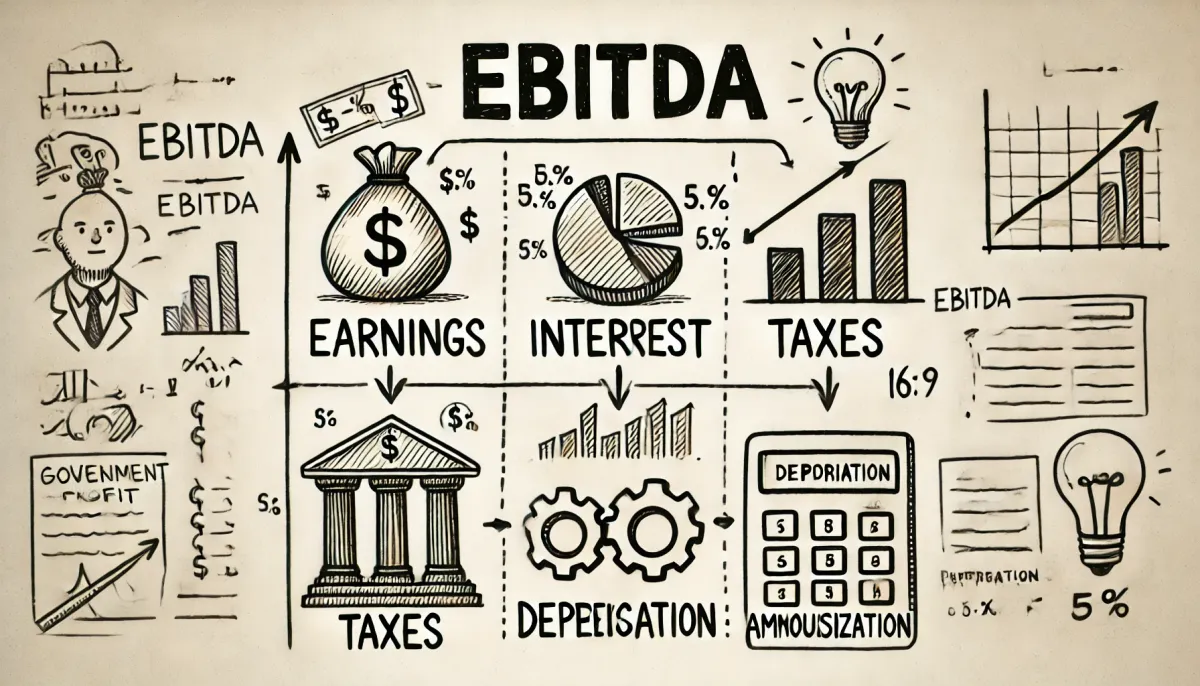
If you've ever read about businesses or watched financial news, you might have come across the term EBITDA. It sounds complicated, but don’t worry—it's just a financial metric that helps us understand a company's performance. Let’s break it down step by step in a way that's easy to understand.
What Does EBITDA Stand For?
EBITDA is an acronym, and it stands for:
- Earnings, this is essentially the profit a company makes;
- Before, it means we’re looking at the profit before subtracting certain expenses;
- Interest, the cost of borrowing money (like paying interest on a loan);
- Taxes, the money a company pays to the government;
- Depreciation, he loss in value of physical assets over time (e.g., machines wear out);
- Amortization, the gradual write-off of intangible assets (like patents or software licenses).
So, EBITDA measures a company’s profit before taking into account these costs.
Why Is EBITDA Important?
EBITDA is often used to evaluate a company’s financial health. It shows how much money a company is making from its core operations, without being distracted by things like:
- How the company is financed (loans vs. investors).
- How much it pays in taxes (which can vary by country).
- The wear-and-tear on its assets (depreciation).
- Costs tied to intangible assets (amortization).
By focusing on the core operations, EBITDA gives a clearer picture of how well the business is performing.
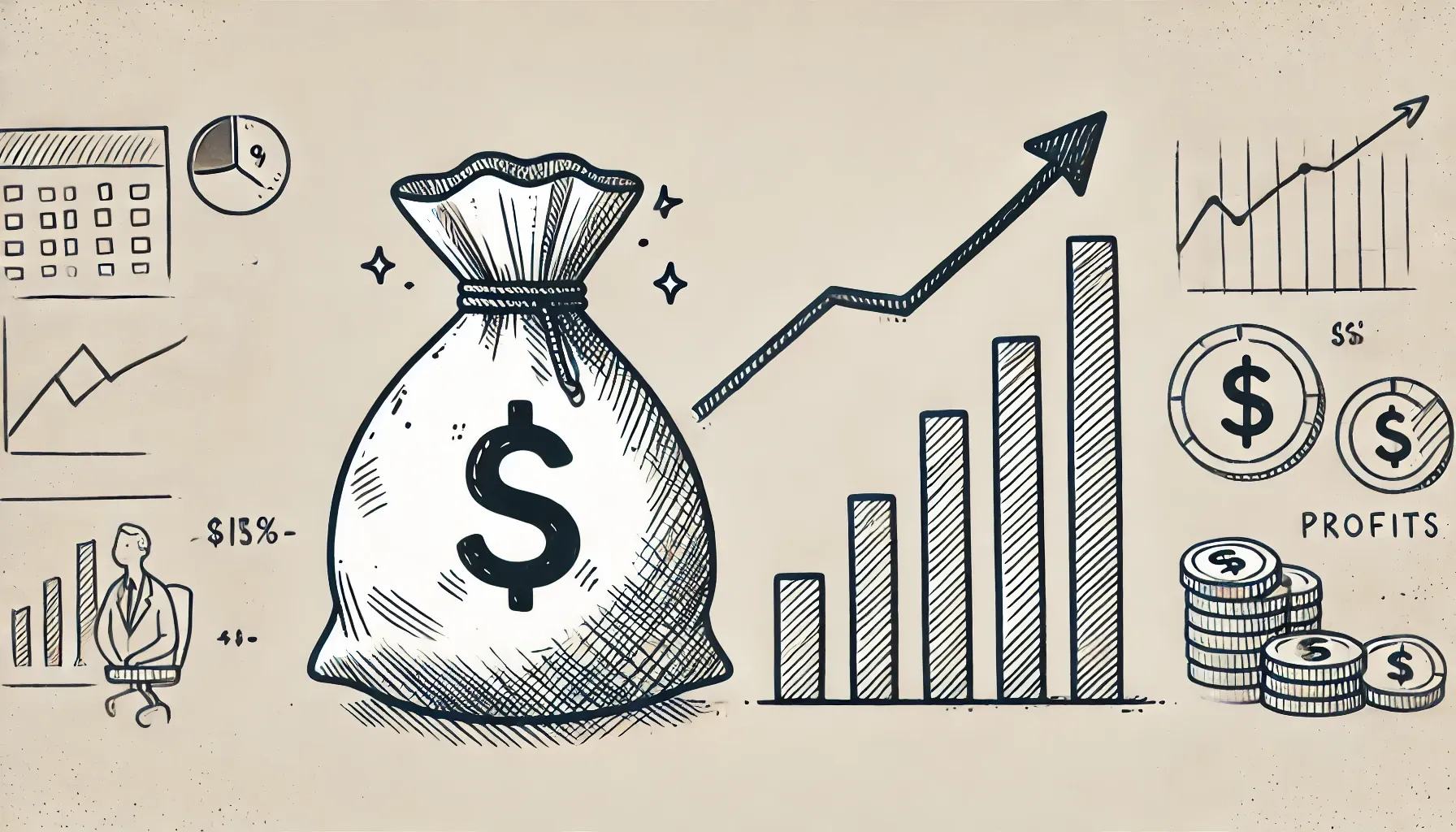
How Do We Calculate EBITDA?
Let’s look at a simplified example.
Imagine you run a bakery. Here’s your financial information for the year:
- Revenue (money from selling cakes): €100,000
- Cost of Goods Sold (ingredients, labor): €40,000
- Operating Expenses (rent, utilities): €30,000
- Depreciation (for your oven and equipment): €5,000
- Amortization (for a recipe patent): €2,000
- Interest on a Loan: €3,000
- Taxes Paid: €7,000
Step-by-Step Calculation
- Calculate Operating Profit:
Earnings before interest and taxes (EBIT) is:
Revenue - Cost of Goods Sold - Operating Expenses
€100,000 - €40,000 - €30,000 = €30,000 - Add Back Depreciation and Amortization:
Add the non-cash expenses back to EBIT:
€30,000 + €5,000 (depreciation) + €2,000 (amortization) = €37,000 - Exclude Interest and Taxes:
These are not part of EBITDA, so they don’t affect the calculation.
Your EBITDA is €37,000, showing the bakery’s profitability before accounting for financing costs, taxes, or non-cash expenses like depreciation and amortization.

Why Does EBITDA "Ignore" Amortization?
You might wonder why amortization is "ignored" in EBITDA calculations when it’s included in the formula. Let’s clarify:
- EBITDA adds back amortization (and depreciation) because they are non-cash expenses. These are costs recorded on paper to allocate the expense of an asset over its useful life, but they don’t involve actual cash leaving the business.
- By adding them back, EBITDA focuses on the operational performance of the business—how much profit it generates from its core activities.
For example:
- If a company has high amortization costs due to investments in patents or software, its net income may look small.
- However, its EBITDA reveals how profitable the core business is, excluding these accounting adjustments.
This adjustment allows businesses with different accounting practices or investment strategies to be compared more fairly.
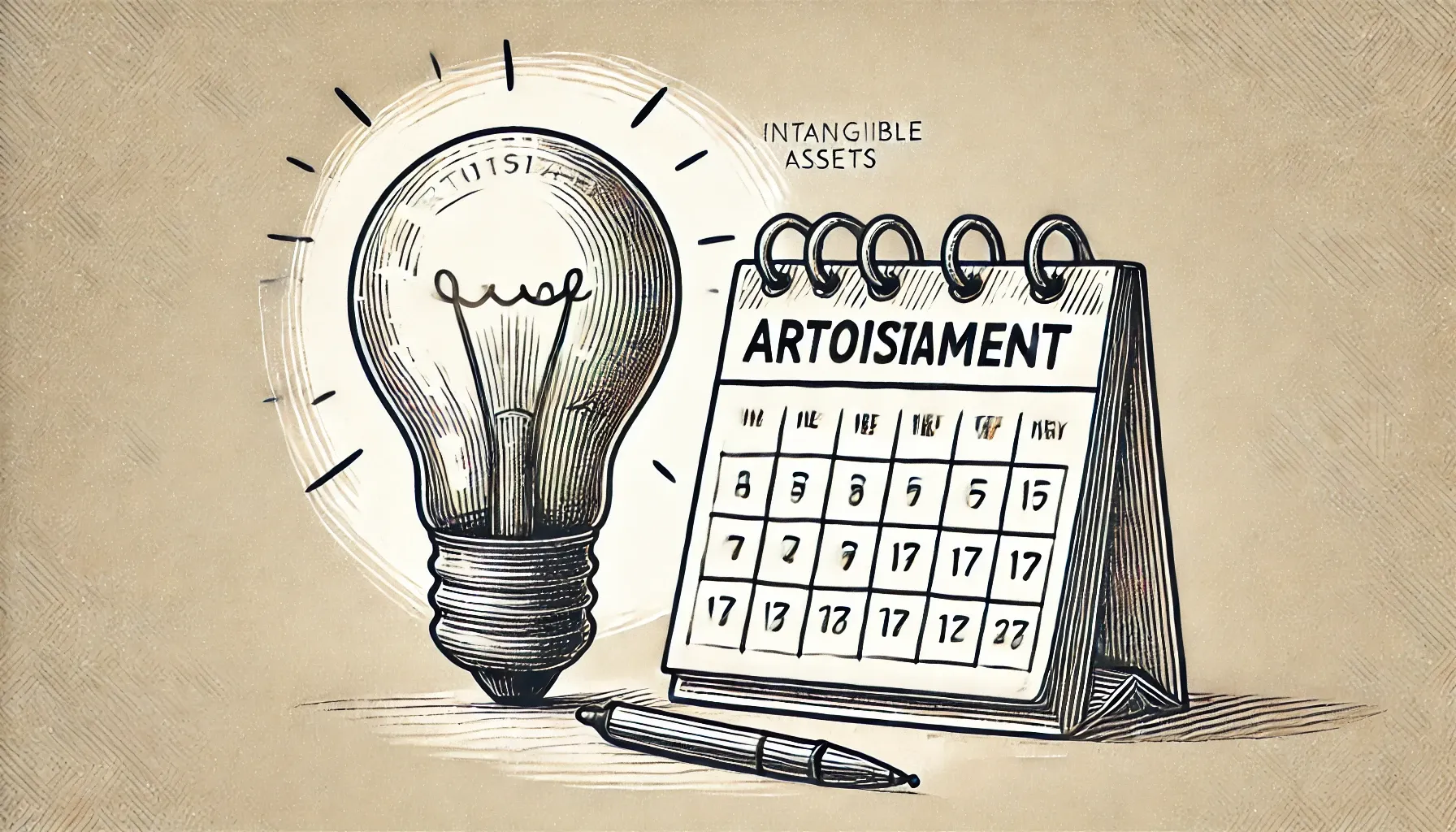
Explaining Amortization in Detail
What Is Amortization?
Amortization is the process of gradually writing off the cost of intangible assets over time. Intangible assets are things you can’t physically touch but still have value, like:
- Patents: Exclusive rights to an invention.
- Trademarks: Logos or brand names that represent a business.
- Licenses: Permissions to use certain technologies or products.
- Goodwill: The reputation or customer loyalty associated with a brand.
| Feature | Amortization | Depreciation |
|---|---|---|
| Type of Asset | Intangible assets | Tangible assets (things you can touch) |
| Examples | Patents, trademarks, software licenses | Equipment, buildings, vehicles |
| Accounting Method | Straight-line method (usually) | Various methods (e.g., straight-line, declining balance) |
How Does Amortization Work?
Imagine you buy a patent for €50,000 with a useful life of 10 years. Instead of recording the entire €50,000 as an expense in the first year, you "amortize" it over 10 years. This means recording €5,000 as an expense each year.
This aligns the cost of the asset with the time it benefits the business. It’s similar to paying for a 12-month subscription upfront but considering it as a monthly expense.
How Is Amortization Different From Depreciation?
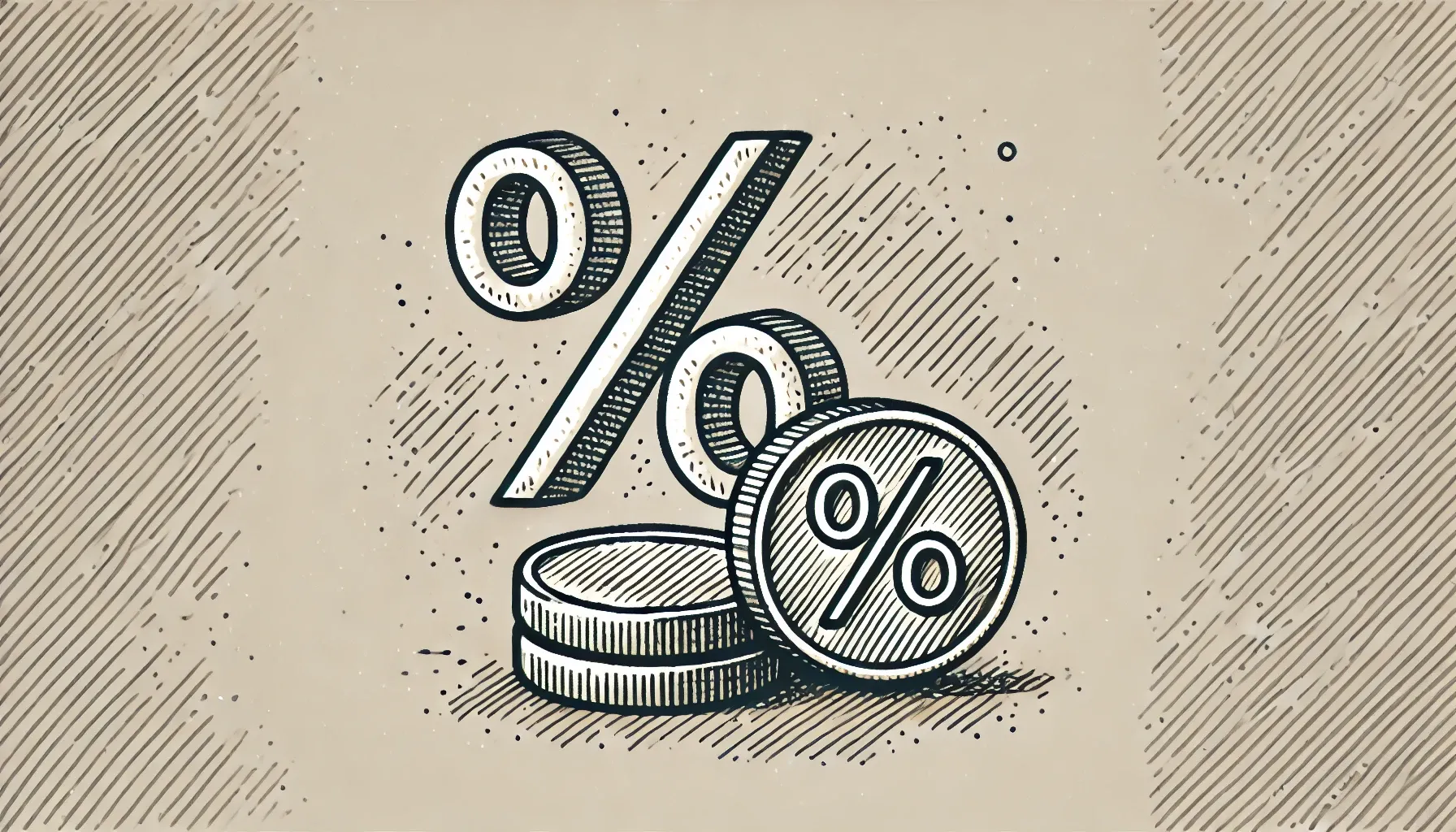
A Real-World Example: Comparing Two Companies
Let’s compare two bakeries:
| Metrics | Bakery A | Bakery B |
|---|---|---|
| Revenue | €200,000 | €150,000 |
| Cost of Goods Sold | €80,000 | €60,000 |
| Operating Expenses | €50,000 | €30,000 |
| Depreciation | €10,000 | €5,000 |
| Amortization | €5,000 | €2,000 |
Step-by-Step Comparison
- Calculate Operating Profit:
- Bakery A: €200,000 - €80,000 - €50,000 = €70,000
- Bakery B: €150,000 - €60,000 - €30,000 = €60,000
- Add Depreciation and Amortization:
- Bakery A: €70,000 + €10,000 + €5,000 = €85,000
- Bakery B: €60,000 + €5,000 + €2,000 = €67,000
- Calculate EBITDA Margin:
- Bakery A: (€85,000 ÷ €200,000) × 100 = 42.5%
- Bakery B: (€67,000 ÷ €150,000) × 100 = 44.7%
Why Does Bakery B Have Higher Efficiency?
While Bakery A generates more revenue and absolute EBITDA, Bakery B has a higher EBITDA margin. This means Bakery B is better at converting its revenue into operational profit. Possible reasons include:
- Lower Costs Relative to Revenue: Bakery B might have lower rent, utilities, or other operational costs compared to its revenue.
- Better Pricing Strategy: Bakery B could charge higher prices or have higher-margin products.
- Efficient Resource Use: Despite being smaller, Bakery B may make better use of its resources, leading to higher profitability per euro of revenue.
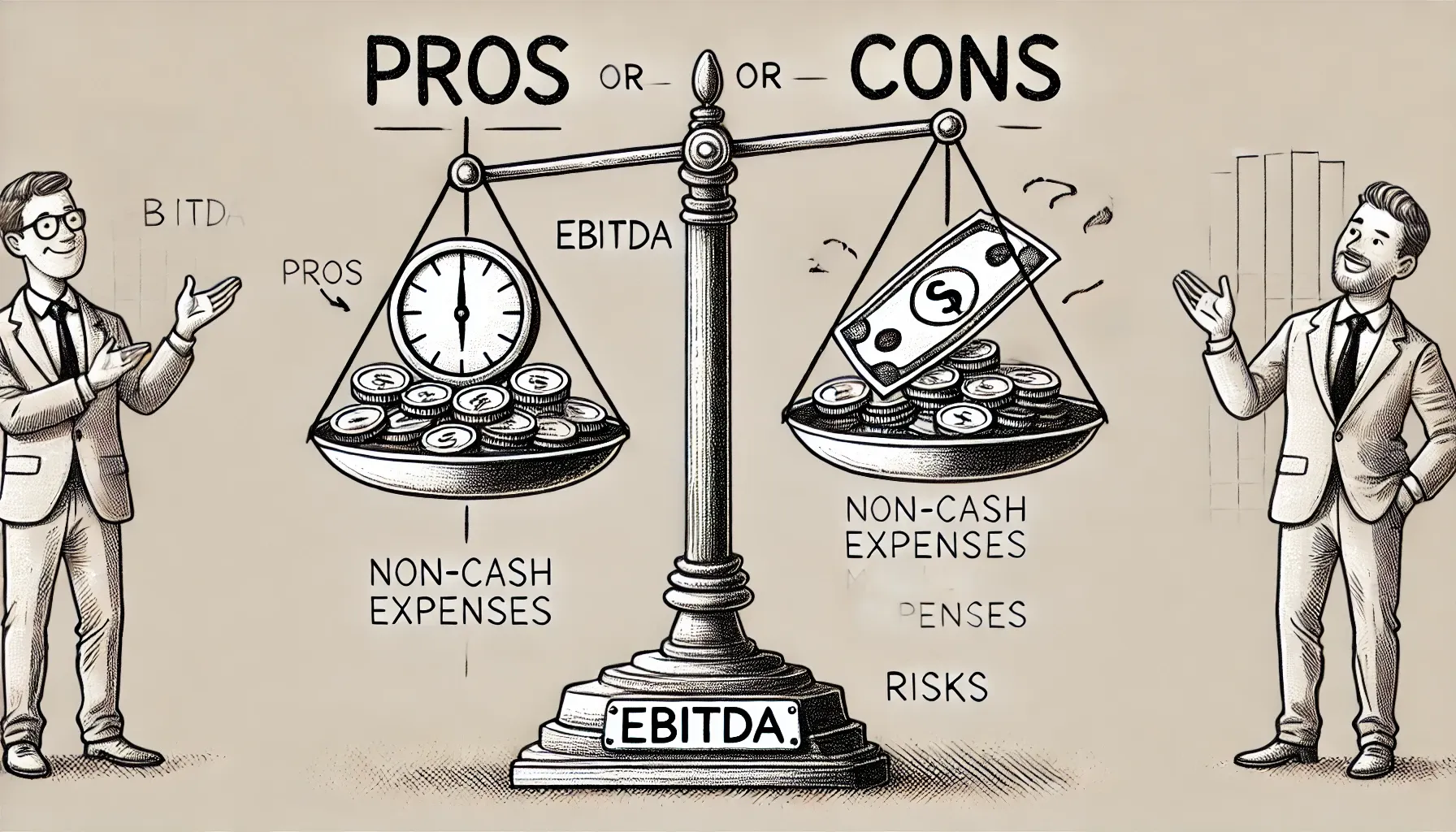
Limitations of EBITDA
While useful, EBITDA has its limitations:
- It’s Not Real Cash: EBITDA doesn’t reflect the actual cash a company has. Expenses like interest and taxes still need to be paid.
- Ignores Real Costs: Depreciation and amortization represent real-world costs. Excluding them can give an overly optimistic view of profitability.
- Can Be Manipulated: Companies might tweak their EBITDA calculations to look more profitable than they actually are.
Key Takeaways
- EBITDA helps evaluate a company’s profitability by focusing on its core operations.
- It adds back amortization and depreciation to remove non-cash and accounting-related expenses.
- EBITDA margin is an important measure of operating efficiency, revealing how much operational profit is generated per euro of revenue.
- While EBITDA is useful, it should be complemented with other financial metrics to gain a full picture of a company’s financial health.
By understanding EBITDA and related metrics like margins, you’re better equipped to analyze business performance and make informed financial decisions.